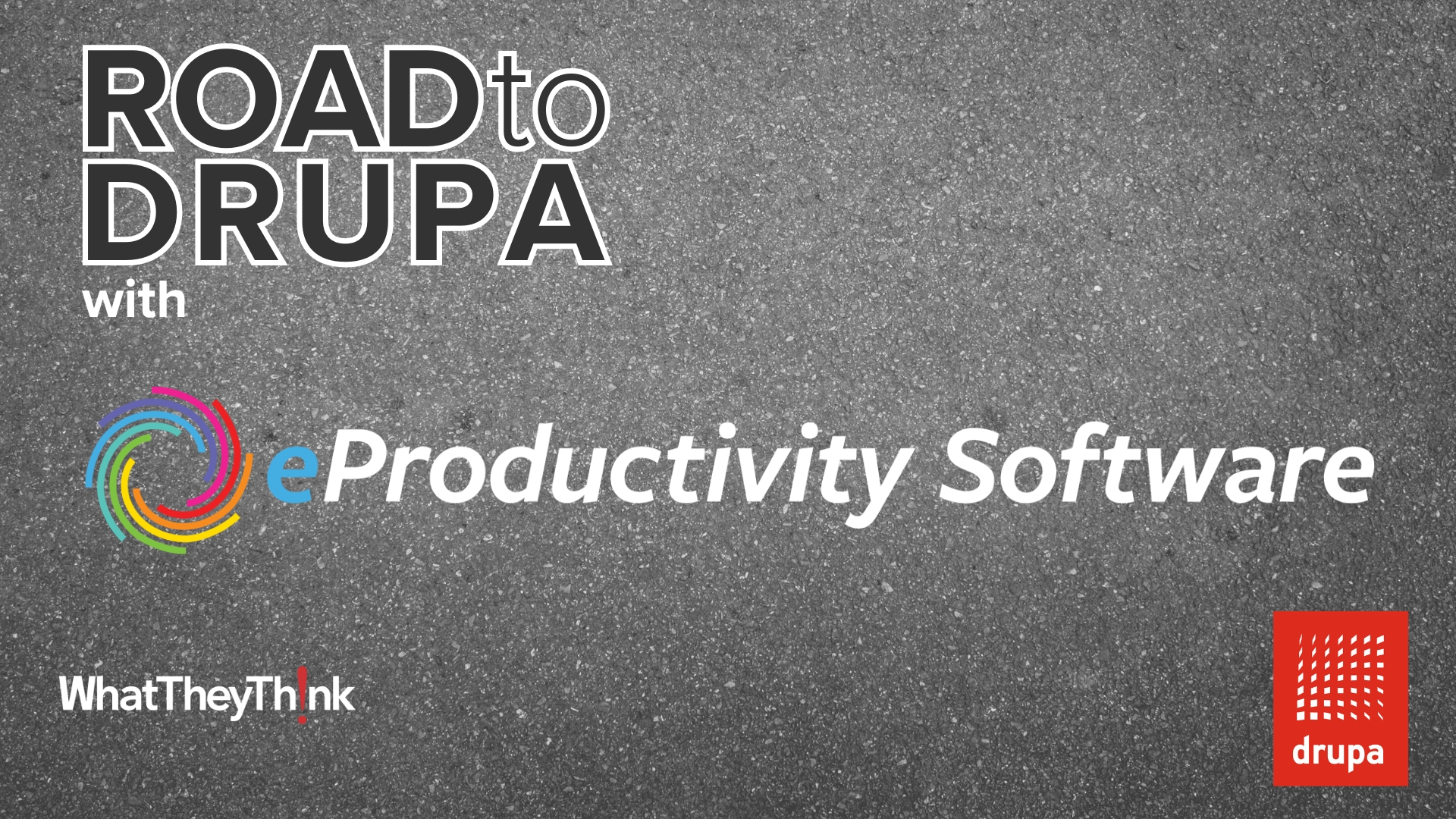Offset lithographic ink may be the most visible element of a printed piece. But as a component of print production, it seldom gets the same attention as the substrates, the press machinery, or even the other consumables. This overlooks the fact that in its inconspicuous way, offset ink has been making as much technical progress as any other ingredient of the printing process.
It couldn’t be otherwise, because today’s late-model, digitally controlled offset lithographic presses are faster, more precise, and more productive than any that came before them. That sets a correspondingly higher bar for the performance of the ink. Out of necessity, offset inks have evolved to a point where they can now meet all of the demands that the high output of modern offset press equipment places upon them.
Martin Weber, Managing Director, hubergroup USA, observes that thanks to advances such as long press configurations, faster running speeds, and energy curing, printers are operating in “a totally different industry” from the one they knew 25 or 30 years ago.
“We, as manufacturers, get challenged by these developments,” he says. In terms of what ink must do to keep up, “I think you have to pay much more attention to this than you did in the past.”
Dr. Thomas Griebel, hubergroup’s Head of Product Management, SF/UV Offset North America, notes that as presses become faster and more productive, “the stress that’s put on the ink is increasing. That requires newly developed raw materials, new resin types, and new binders so we can tailor our future inks to future needs.”
Chemistry of Coverage
A similar assessment comes from Roy van der Pijl, Senior Commercial Director, Offset Packaging Solutions at Flint Group. He says that the high performance of today’s offset presses have prompted ink manufacturers to develop binder systems that reduce the tendency to misting at top speeds. (Binders hold the pigments together and adhere them to the surface they are applied to.)
He adds that the rheology of offset lithographic inks—the properties that govern their flow—“has been adapted to ensure they can continue to provide required standards of dot sharpness and grey balance.”

Flint Group has eliminated mineral oil from its sheetfed offset process inks to reduce their carbon footprint.
“Ink companies continue to develop offset inks that match press speeds, with a strong focus on ink/water balance and faster dry time,” says Tom Pokorny, Director, Product Management, FUJIFILM North America Corporation, Graphic Communication Division.
“The challenge is getting the right mix of additives, varnishes, and pigment load to maintain good ink/water balance and press stability, while maintaining vibrant colors, and creating images with a good dot structure, without scuffing and misting.”
Pokorny adds that on-press performance isn’t the only factor the ink industry has to consider. Paper and environmental regulations, he points out, “have a great deal of decision-making on ink development, which has become more challenging compared to years past.”
Calibrate and Monitor
But no matter how carefully formulated an ink may be, some of the responsibility for making the most of what it can do rests with the customer.
As Pokorny says, “Customers want consistent color from the start to finish of their print jobs and at the highest speeds the press can go. That means the ink, fountain solution, plates, and superior new press controls that operators have at their disposal have to stay in calibration and be monitored regularly.”
He adds that printing on substrates with different surface characteristics adds to the challenge of controlling drying, marking, and absorption.
To get the best results with strong, highly pigmented conventional inks, recommends Michael Keegan, Vice President Sales of the Toyo Ink America division of artience, printers should run them with correctly mixed fountain solution at a sufficient press temperature.
He says that many shops go wrong by adding too much glycol to the fountain solution concentrate, leading to problems with ink/water balance and drying. To keep the ink moving in the pan and the rollers, the temperature should be 68º in the former and between 74º and 76º in the latter.
“That’s where you get flow out,” Keegan says. “The ink is transferring better because it’s warmer.” A cold press, on the other hand, slows down ink transfer and may produce condensation visible as water lines in the print.
Ink isn’t the only ingredient of peak press performance, Griebel comments. All of the consumables—ink, plates, blankets, and fountain solution—have to work together. “Once we find the right setup, then we get to a highly productive environment,” he says.
What printers want ink to accomplish for them above all, according to Weber, is “trouble free production.”
“What is triggering downtime? What is triggering cost? If we have an ink/water balance achieved in a very short time, you have only limited paper waste. Everybody wants to reduce costs. Time is money. Paper waste is money. This is what I see when we have discussions with customers today,” Weber says.
“Narrower” Targets to Hit
Continuous colorimetric measurement on newer presses means that “the requirement from our customers in terms of consistency and integrity is always getting narrower,” Griebel adds. As the equipment gets more precise with respect to color control, “a consequence for us is that our QC aspects get tighter and tighter.”
Multinational packaging customers want their inks to perform consistently no matter where they are used, Weber says.
“They expect that if they print from one plant to the other, or from one country or continent to the other, they get the same result.” For ink manufacturers, this means blending ink formulas to local requirements and using a global color communication system to assure that brand colors will be identical all over the world.
Yutaka Shikano, President of Megami Ink America Inc., notes that printers nowadays are increasingly expected to conform to G7 color control specifications, and that most of Megami’s users are asking about G7 compliance. To help them achieve it, Megami designs its inks for faster water pickup, stable water balance, less paper waste, and better ink mileage during the run.

Megami Ink America Inc., offers conventional and energy-curable metallic gold and silver offset inks.
The industry’s growing preference for energy-curable printing has given the ink manufacturers a broad front on which to make technical progress.
Keegan says that artience’s portfolio now consists of 90% energy-curable and 10% conventional ink products—the opposite of what it was 10 years ago. In his view, the print market’s shift in the direction of energy-curable ink is part of a bigger trend driven by the near-universal adoption of content-delivery devices like the iPhone: “Everybody wants everything now.”
“A Whole Better Way to Print”
Keegan says instant-drying curable ink satisfies that requirement by speeding production throughput. “It also looks better, especially on uncoated stock, it prints so much cleaner and brighter. You don’t have drying issues. It’s just a whole better way to print these days.”
According to Pokorny, printers who want the advantages of energy curing without the downsides of conventional UV lamps are adopting LED UV either by retrofitting the technology to their existing UV presses or purchasing presses designed specifically for LED UV output.
“I would say to anyone looking to invest in faster job turnaround and drying to leapfrog the UV technology and move straight to LED, or upgrade their existing UV systems and integrate LED,” Pokorny advises. Production with LED UV “becomes more focused on high speed and press stability and closes the loop on issues with drying and curing on a variety of substrates.”
What’s more, LED UV technology “gives you all the benefits of curing and drying and at the same time addresses the environmental concerns of UV,” such as disposing of conventional mercury vapor lamps.”
Shikano, however, rejects the idea of a “polarization” in demand among users of conventional UV and LED UV ink products. “UV users need UV curable inks, that’s all,” he says. He predicts that both kinds of UV technology will remain in demand for their respective customers.
Whether they’re for lamp-based or LED UV systems, the pace of movement toward energy-curable inks isn’t the same everywhere. As Griebel points out, adoption varies by region. He says that because the raw materials of UV inks are “highly scrutinized” by regulators in Europe, “we don't see a lot of growth in UV printing anymore” on that continent. In North America, on the other hand, the continuing installation of LED UV equipped presses is sustaining demand for that type of ink.
Eliminating SVHCs
Similarly, van der Pijl sees adoption being constrained by mounting regulatory demands on offset printers. “Many raw materials traditionally used in UV curing inks are now being identified as substances of very high concern (SVHCs) or are facing similar restrictions on their use,” he notes. “This is prompting ink manufacturers to reformulate and replace their existing raw materials.”
At the same time, the growing focus on environmentally-conscious printing is placing new requirements on products that use UV-curable inks. This is why “more and more customers are requesting proof of de-inkability and other sustainability characteristics,” van der Pijl says.
As the ink manufacturers know, the one aspect of their product that never fails to attract attention is sustainability. This has spurred intensive effort into developing inks with fewer consequences for the well-being of the environment.
Flint Group has eliminated mineral oil from its sheetfed offset process inks to reduce their carbon footprint while stepping up its use of renewable and recyclable raw materials, according to van der Pijl. “We are proud that no Flint Group Sheetfed inks contain SVHCs, and we are working to maintain compliance with regulatory changes by proactively replacing critical raw materials where necessary,” he says.
In pursuit of sustainability, Flint Group also develops deinking and recycling solutions, maintains cradle-to-cradle certifications, and optimizes its manufacturing processes to reduce energy and water consumption as well as minimize waste.
Another commitment, says van der Pijl, is to “make sure we only use raw material suppliers that have proven their sustainability credentials and are committed to ESG (environmental/social/governance) goals regarding supply chain security and standards of behavior.”
Don’t Forget De-Inking
Shikano says that Megami has increased the amount of vegetable-based materials its inks contain to improve the recyclability of products printed with them. Needing further discussion by the ink industry, he says, is increasing the recyclability of matter printed with UV-curable offset inks and coatings, which can be difficult to separate from substrates using standard de-inking techniques.
Griebel says that steps taken to make hubergroup inks more sustainable include eliminating mineral oils and cobalt (a drying agent) from the recipes. The bio-renewable content of the inks can be as high as 70%, excluding only the pigment. The company practices sustainability in manufacturing by equipping its plants with solar panels and systems for water recycling.
The company, Griebel adds, has “aligned ourselves very much with the cradle-to-cradle circular economy principle. That's how we live by now when developing and manufacturing.”
artience inks, says Keegan, “are all geared to low VOC or zero VOC,” adding that these properties belong both the manufacturer’s conventional and energy-curable ink products. He urges printers to select their inks with care, especially shops with environmental and food-safety certification requirements to satisfy.
A cheap ink, he cautions, is likely to be a high-solvent, high-VOC ink that also performs poorly on press. Ink formulations billed as sustainable should be double-checked for authenticity in that regard.
“If somebody wanted a soy ink, all they would have to do is put 20% soybean oil into the ink and it classify as a soybean ink,” Keegan explains. “But it can have a super high VOC. That's why you look at the label for point of origin. It tells you exactly where that ink is manufactured, so you can cross-reference things.”
Protecting the Press Investment
As Keegan points out, progress in offset lithographic inks is proceeding in many directions: LED UV curable products for both sheetfed and web printing; inks for high-fidelity printing with systems like Hexachrome; and coatings and varnishes for special effects and surface textures. He sees the main challenge for ink manufacturers as helping printers to understand what’s available to them and how they can make the most of it.
“Our customers have come to expect inks that empower them to print with the quality and reliability they deserve,” agrees van der Pijl. “Inks also need to support the high productivity that modern presses can achieve. If inks cannot handle the speeds that these presses are capable of, the potential productivity gains of this expensive investment are essentially wasted.”
“When customers put these brand new, multimillion dollar machines on the floor, it’s all about educating your customer and using you as a reference point,” Keegan says. “A lot of people are just not experienced or educated on these new inks and coatings and varnishes. That's why you have to use your resources positively.”










Discussion
By John Zarwan on May 01, 2024
I wonder...how closely do press manufacturers work/consult with ink manufacturers when they develop new presses? Anyone care to weigh in?
Discussion
Join the discussion Sign In or Become a Member, doing so is simple and free